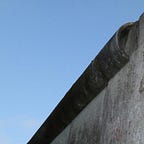Prop Making: Shoretrooper Helmet
From a reel of filament to a replica Star Wars prop!
Printing the Helmet
The following is a build blog for Sean Fields’ 3D modeled Shoretrooper helmet, which he has made freely available on Thingiverse (when you hit the download button don’t forget to leave a tip!). Hopefully these few tips and images will help others and inspire you to print your own!
After downloading all of the files I initially loaded them into Cura and with all of the settings ready I noted the estimated print time of each piece. This would enable me to create a print schedule over the week.
Print settings: Wombot Exilis XL
Layer Height: 0.2
Initial Layer Height: 0.3
Infill: 10% (small pieces)–20%
Print Speed: 40mm/s
Travel Speed: 120mm/s
Temperature/Speed will depend on your printer and material, usually noted somewhere in an online 3D printing forum.
I used support structures and a skirt on each print, and altered the density of the support for the cheek pieces as I experienced some trouble when trying to achieve an accurate print for those parts. A glue stick was used to cover the glass print bed while the printer was self leveling (approximately 1 min before print started).
All together I would have been able to print all of these parts with a 1kg reel of PLA filament ($34 AUD), but due to two misprints I had to print one piece with a new reel of filament.
Smoothing and Joining
I quickly found out that the filament I was using didn’t like superglue. It was standard PLA, but for some reason a strong bond was never achieved even after a day of the superglue drying between two clamped parts.
Solution: acquire or borrow a rotary tool, insert a few inches of filament and crank it all the way up. As you press the filament into the seam, the friction will melt the plastic and the two edges. It is as if you had printed one whole piece instead of two, and with some sanding this is a very easy way to achieve a strong and clean bond.
In order to smooth out the 3D printed parts I utilized some of Smooth-on’s XTC-3D print coating, which is easy to apply but when doing so make sure you are wearing a respirator — the stuff is absolutely toxic.
Once applied and left to dry overnight, I begun the sanding process. Starting with an 80 grit sanding block, I progressed to 120>220 and then wet sanded at 600 grit and up until I was happy with the final result. From here I hit it with a few layers of grey primer.
Painting and Finishing
For the final touches I partly followed Paul Prentice’s Shoretrooper Helmet painting tutorial which was immensely helpful! I applied a few layers of black spray paint onto the whole helmet, let it dry for 24 hours before applying the tan.
As Paul outlines in his tutorial, the idea is you then scrape back (I used steel wool and a flat head screwdriver for the edges) the tan to reveal the black. This gives some very realistic scratches and dents. I also used a technique recommended by the guys at the local hobby store (www.metrohobbies.com.au) for a shrapnel-like weathering effect.
Basically, before applying the tan coat you spray any areas you want blistered with shrapnel with some high stick hairspray. Then you quickly sprinkle some sea-salt (make sure they aren’t perfect cubes you don’t want it to look uniform). Now once you have applied the tan spray paint, you take some steel wool or a knife and chip away at the salt which then falls off the helmet and revealing the black underneath.
And there you have it, above is the finished piece. I would still like to weather the helmet a bit more, using an acrylic wash but this was the final piece I took to the Australian midnight release. The blaster shield symbol was hand painted with some red enamel, and the lens was made with a heat gun, dremel and acrylic sheet (light coat of spray paint to make it black and still slightly transparent).
Feel free to ask any questions, and you can see more images on my Instagram.
Again, a big thank you to Sean Fields for making this model available!
